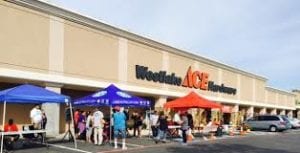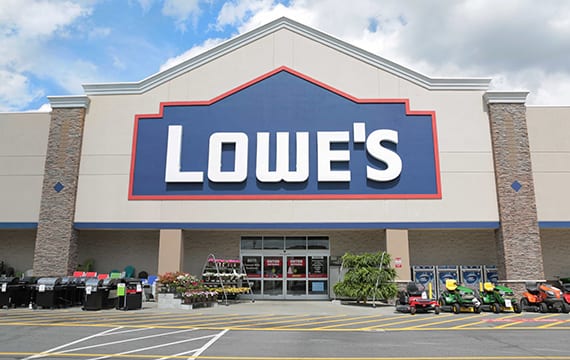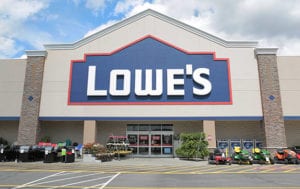
Nicole Leinbach Reyhle is the Founder and Publisher of Retail Minded, the Co-Founder of the Independent Retailer Conference and a regular contributor to various publications that include Entrepreuner.com. Additionally, Reyhle is the Author of the book “Retail 101: The Guide to Managing and Marketing Your Retail Business” from McGraw-Hill and has been the Spokesperson for Small Business Saturday from American Express since 2014. Follow Reyhle on Twitter at @RetailMinded.
Merchants have task-lists that are seemingly never ending, yet fortunately many of the responsibilities that have traditionally fallen on retailers to-do-lists can now be eliminated thanks to point of sale systems. Through POS data, retailers can more efficiently manage their store operations, employee management and consumer understanding – as well as strengthen their sales. Additionally, merchants can strengthen their vendor relationships by sharing key data generated through their POS that allows the retailer and vendor to have a more transparent partnership in managing their product sales. These key factors fueled by optimizing inventory through POS data, which ultimately strengthens store success while also eliminating time and unnecessary tasks for merchants to manually complete. To discover more about optimizing inventory, consider the below three points.
#1: POS Delivers Enhanced Data That Human Touch Alone Cannot Deliver
With so many moving pieces within a store environment, it’s nearly impossible to believe that humans alone can accurately manage all the details that come with tracking inventory data. From ordering inventory to new shipments being received to stocking shelves and ultimately tracking sales of inventory sold, there are countless opportunities for inventory to be overlooked or mishandled – particularly when you factor in the number of various employees involved  in these moments. While human touch is an asset to store success, human touch alone is not able to accurately manage the details of inventory and customer behavior. Fortunately, this is where strong POS data can add value to retailers. A busy beauty retailer, for example, can gain from stronger inventory management thanks to POS data delivering a streamlined and sophisticated approach to identifying slow moving inventory, favorable time periods of products sold, successful or failed store promotions, employee sales and more – all calculating into real-time data that helps this same busy merchant make more accurate inventory decisions. This is even further supported when you factor in how store merchandisers – such as beauty brand consultants – that service stores can utilize POS data to more strategically merchandise the inventory they are refreshing based on hot selling items, slow moving inventory, promotional sales and more.
in these moments. While human touch is an asset to store success, human touch alone is not able to accurately manage the details of inventory and customer behavior. Fortunately, this is where strong POS data can add value to retailers. A busy beauty retailer, for example, can gain from stronger inventory management thanks to POS data delivering a streamlined and sophisticated approach to identifying slow moving inventory, favorable time periods of products sold, successful or failed store promotions, employee sales and more – all calculating into real-time data that helps this same busy merchant make more accurate inventory decisions. This is even further supported when you factor in how store merchandisers – such as beauty brand consultants – that service stores can utilize POS data to more strategically merchandise the inventory they are refreshing based on hot selling items, slow moving inventory, promotional sales and more.
#2: POS Offers Time Saving Features That Helps Strengthen Selling Goals
Retailers are never short of things to do, which is why point-of-sale is so valuable for busy merchants to implement into their operation strategy. Through POS data, retailers gain automation, integration, analytics, CRM, employee management and more – helping to streamline the various responsibilities a merchant must cross off their to-do-lists. This saved time allows for more time to sell, sell, sell… which is ultimately the goal of any merchant. More sales translate to more inventory which ultimately leads to stronger profit and more success – something any retailer can appreciate. Additionally, with more and more consumers shopping in an omni-channel fashion – such as ordering online and picking up in store – having inventory right is key. The catch, of course, is leaning on POS data to help.
#3: POS Offers an Unbiased Eye of Inventory Performance
Just like human touch can make errors, so can the emotions that often factor into inventory buying decisions. Take, for example, the love of gardening that a hardware store owner may have – such as creating garden boxes and collecting garden tools – and thus, this retailer invests inventory dollars into a large percentage of gardening inventory that exceeds their gardening budget. While this hobby is undoubtedly one to enjoy, it should not impact buying decisions – yet too often, retail buyers let their own emotions fuel inventory choices. Keeping this in mind, POS data can offer unbiased insight on the reality of what is selling, how fast the turn-over is and what items simply aren’t performing as they were expected to. Combined with the support vendors can offer retailers based on POS data, retailers can leverage the expertise vendors have in knowing their inventory best to provide them with actionable insights they can use to optimize their inventory and increase sales – something every merchant should factor into their buying strategy since managing potentially hundreds of thousands of products across hundreds of stores and multiple vendors can prevent merchants from keeping a close on inventory down to each item and store. These key details can then be reviewed and analyzed by store buyers and vendors alike to make stronger – and less emotional – buying decisions.
Finally, remember that you cannot improve what you don’t understand – and inventory is no exception. Through POS data retailers gain visibility into their inventory management, allowing them to ultimately have a clearer, more accurate understanding of their inventory needs. With this added insight, retailers are then positioned to optimize their inventory unlike ever before – and thus, gain stronger store success.














